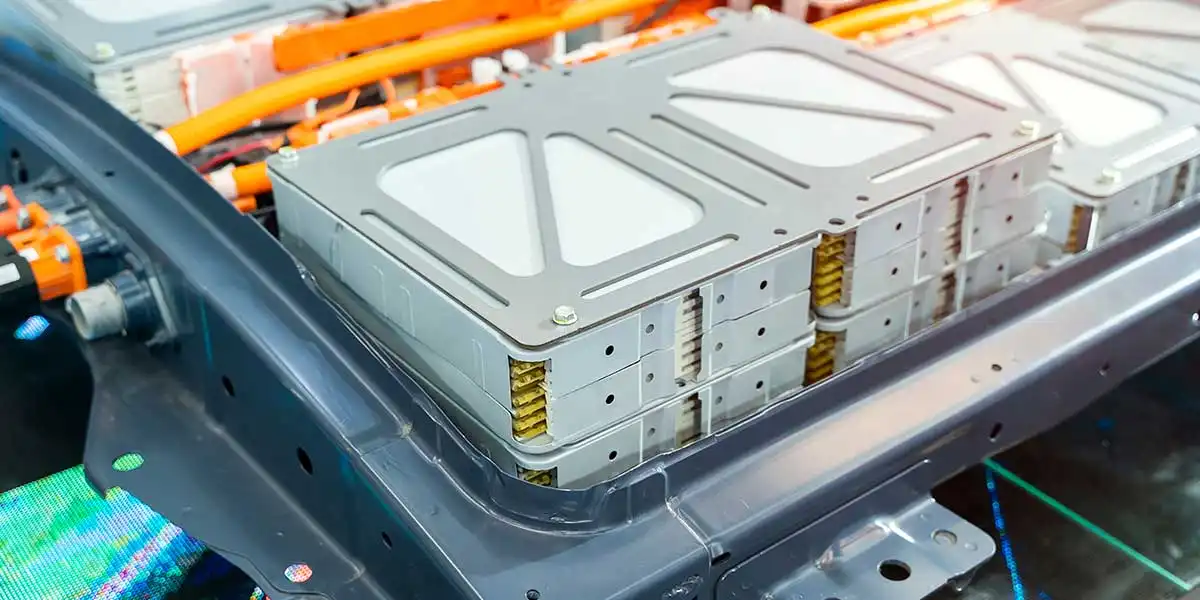
Apr 25, 2025
Blog Energy & Sustainability Top 5 Grid-Scale Electricity Storage Technologies Shaping Global Markets
Grid-scale electricity storage technologies are changing how we handle and distribute energy. As we shift towards renewable energy sources, these technologies are becoming more and more essential.
According to BCC Research, the global market for grid-scale electricity storage technologies is experiencing rapid growth. It is estimated to grow from $40.7 billion in 2024 to $151.2 billion by the end of 2029 at a compound annual growth rate (CAGR) of 30.0% from 2024 through 2029.

Here are the top five grid-scale electricity storage technologies that are making a significant impact on global markets:
Lithium-ion batteries are the most widely used technology for grid-scale energy storage. Known for their high energy density, efficiency, and declining costs, they are popular for utilities and grid operators. These batteries can quickly store and release large amounts of energy, making them ideal for balancing supply and demand, integrating renewable energy sources, and providing backup power during outages. The global market for lithium-ion batteries is expected to grow significantly, driven by advancements in technology and increasing demand for renewable energy integration.
The global market for grid-scale electricity storage technologies is estimated to grow from $40.7 billion in 2024 to reach $151.2 billion by the end of 2029, at a compound annual growth rate (CAGR) of 30.0% from 2024 through 2029.
Pumped hydroelectric storage is one of the oldest and most established forms of grid-scale energy storage. It involves pumping water from a lower reservoir to a higher one during periods of low electricity demand and releasing it back through turbines to generate electricity during peak demand. PHS systems have long lifetimes and high operational efficiencies, making them a reliable and cost-effective solution for large-scale energy storage. Despite their geographical limitations, PHS systems account for a significant portion of global energy storage capacity.
Flow batteries, such as vanadium redox flow batteries, offer a unique advantage over traditional batteries by separating the energy storage and power generation components. This allows for flexible scaling of energy capacity and power output. Flow batteries are well-suited for long-duration storage applications, providing stable and reliable energy over extended periods. They are gaining traction in the market due to their long cycle life, safety, and ability to support large-scale renewable energy integration.
Compressed air energy storage systems store energy by compressing air in underground caverns or tanks. Compressed air is heated and expanded when electricity is needed to drive turbines and generate power. CAES systems can provide large-scale energy storage with long discharge durations, making them suitable for balancing intermittent renewable energy sources. Although there are only a few operational CAES plants globally, the technology holds promise for future expansion as the demand for grid-scale storage grows.
Thermal energy storage systems store energy in the form of heat, which can be converted back into electricity when needed. These systems use molten salts or phase-change materials to store thermal energy. TES is particularly effective for long-duration storage applications and can be integrated with renewable and conventional power plants. The market for thermal energy storage is expanding as more utilities and industries recognize its potential for enhancing grid stability and efficiency.
The global market for grid-scale electricity storage is set to grow significantly. As we move towards renewable energy, these technologies will be key to maintaining a stable and reliable power supply. Each type has its benefits, from lithium-ion batteries to thermal energy storage. Investing in these technologies will help create a more sustainable and resilient energy future.
The global grid-scale electricity storage technologies market is ready for significant growth in the coming years. As the world continues to shift towards renewable energy, these technologies will play a crucial role in ensuring a stable and reliable power supply. Each technology offers unique advantages, from lithium-ion batteries to thermal energy storage, that cater to different energy storage needs. Investing in and adopting these technologies can pave the way for a more sustainable and resilient energy future.
Consider becoming a member of the BCC Research Library and gain access to our full catalog of market research reports in your industry. Not seeing what you are looking for? We offer custom solutions too, including our new product line: Custom Intelligence Services.
Contact us today to find out more.

Kavita Rawat is a Marketing Operations Executive at BCC Research, with a master’s degree in business. She specializes in optimizing marketing strategies and content creation. With her MBA, she combines her passion for marketing with her academic prowess to drive success in the ever-evolving field.

Electrical switches—devices that control the flow of electricity—are the backbon...

As the world accelerates toward net-zero emissions, hydrogen, and ammonia have e...

Hydrogen technology is widely used across industries like glass, fertilizer, met...

We are your trusted research partner, providing actionable insights and custom consulting across life sciences, advanced materials, and technology. Allow BCC Research to nurture your smartest business decisions today, tomorrow, and beyond.
Contact UsBCC Research provides objective, unbiased measurement and assessment of market opportunities with detailed market research reports. Our experienced industry analysts assess growth opportunities, market sizing, technologies, applications, supply chains and companies with the singular goal of helping you make informed business decisions, free of noise and hype.